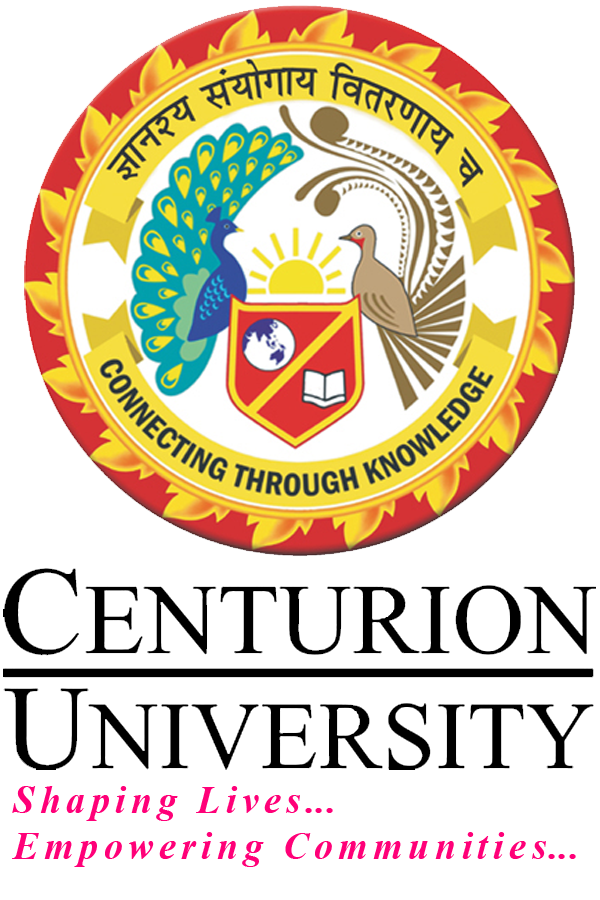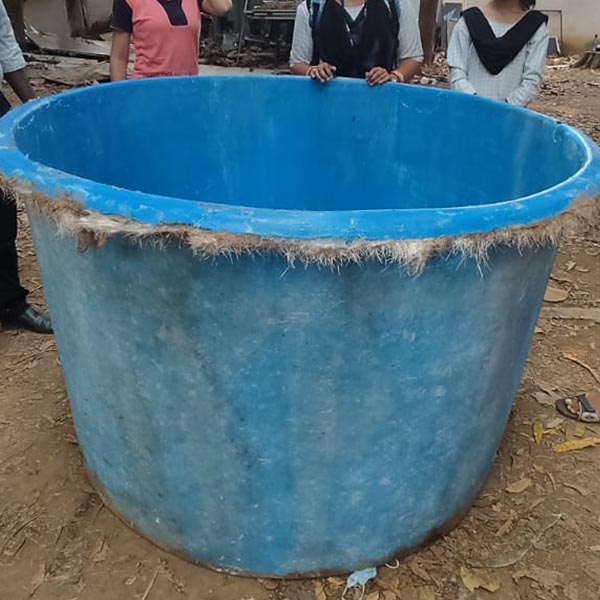A composite material is a combination of two materials with different physical and chemical properties. When they are combined they create a material which is specialized to do a certain job, for instance to become stronger, lighter or resistant to electricity. They can also improve strength and stiffness. The reason for their use over traditional materials is because they improve the properties of their base materials and are applicable in many situations. Students will get familiarized with the concept, classification and application of Composite. In this domain students will be able to learn how to design a composite material using Catia software. Material properties can be studied by Biovia software. Students will get familiar with 3d experience software. Well-equipped laboratory with different types of matrix and fiber where students will do hands-on practice and fabricate different types of composite which can be used in our day to day work.
Domain Track: Composite Design and Manufacturing
Course Attendees
Still no participant
Course Reviews
Still no reviews
Track Total Credits ( T-P-P): 6-12-6 (24 credits)
Courses Division
Domain Track Objectives:
Domain Track Learning Outcomes:
Career Scope:
Domain Syllabus:
1 Introduction to composites (20h)
Module I
- 1.1 Introduction to polymer
- 1.2 Introduction to composite
- 1.3 Classification: Particulate composite
- 1.4 Classification: Fiber reinforced composite
- 1.5 Polymer matrix composites
- 1.6 Metal matrix composites
- 1.7 Ceramic matrix composites
- 1.8 Nature-made composites,
- 1.9 Applications:Fiber glass
- 1.10 Applications:Fiber glass
- 1.11 Applications: Silica
- 1.12 Applications: Kevlor,Carbon
- 1.13 Applications:Boron, Silicon Carbide
Module II
- 1.14 Constituent materials for composite
- 1.15 Basic structural application of Composite
- 1.16 Advanced structural application of Composite
Module III
- 1.17 Multifunctional Applications of Composites
- 1.18 Fabrication Processes
- 1.19 Elements of Mechanical Behavior of Composites
- 1.20 Review of Basic Mechanics of Materials Equations
2 Biovia - Composite materials and characterization techniques (25 h)
Practice:
- P2.1 Polymer menu
- P2.2 Build menu using new molecule
- P2.3 Blends menu
- P2.4 Synthia menu
- P2.5 Polymer-polymer composite
- P2.6 Nanoparticle-polymer composite
- P2.7 Inorganic composite
- P2.8 SEM analysis
- P2.9 FTIR analysis
- P2.10 XPS analysis
- P2.11 Gaussian menu
- P2.12 Reflex menu
3 CATIA-Composites Design (50 h)
- P3.1 Practice: Composite Part Design topics: Preliminary Design
- P3.2 Manual Ply Creation, Zone Design, ply Management, Mirroring, Creating IML’s & Solids
- P3.3 Analyzing Drop Off and Slicing,composite Grid Design, Grid Panel Definition, Grid Definition
- P3.4 Composite Grid Design, Grid Panel Definition, Grid Definition
- P3.5 Virtual Stacking Management, Plies Generation
- P3.6 Grid Ramp Support Definition, Remove Useless Ramp Supports
- P3.7 Swap Edge, Reroute Ply Contour,define Local Drop Off, Create Standard Contour,
- P3.8 Define No Drop Off Area, Synchronize Stacking, Limit Plies from Panel Limits
- P3.9 Creating a Manufacturing Document, Synchronizing, Skin Swapping, Defining the Edge of Part, Material Excess, ProducibilityFlattening
- P3.10 Flatten Optimization, Geometry Transfer, Producibility Inspection, Fiber Direction, Unfold Entity, Splicing and Splice Zones,
- P3.11 Darting, Exporting, Exporting Ply Data as IGES or DXF, XML Export, Drafting Standards, Creating a Ply Book
- P3.12 Adding Material to Plies, Stagger Origin Points, Grid Angle Cut
4 Composite Product Validation; Simulia (Abaqus FEA) (50 h)
- P4.1 Practice: Defining a Problem
- P4.2 Defining anisotropic elasticity with Hookean models for combining the fiber-matrix response
- P4.3 Defining composite layups using Abacus/CAE
- P4.4 Defining discrete or layered reinforcing within an element using rebar
- P4.5 Membrane elements and truss elements
- P4.6 Achieving the correct material orientation of the layers of composite shells
- P4.7 Modeling sandwich composite structures
- P4.8 Modelling stiffened composite panels
- P4.9 Define No Drop Off Area, Synchronize Stacking, Limit Plies from Panel Limits
- P4.10 Modeling progressive damage and failure in composites
- P4.11 Modeling delamination of composite structures
- P4.12 Modelling low cycle fatigue of composite structures
5 Machineries and Technologies used for Manufacturing of Composites (20 h)
- 5.1 Introduction
- 5.2 Basics of Laminates, which have layers bonded together
- 5.3 Sandwiches
- 5.4 Open Mold Processes-
- 5.5 Hand layup process
- 5.6 Spray Bag, Vacuum Bagging
- 5.7 Automated tape laying machine,
- 5.8 Pressure bag molding
- 5.9 Closed Mold Processes
- 5.10 Filament Winding
- 5.11 Pultrusion Processes
- 5.12 PMC Shaping Processes.
- 5.13 Application of Pultrusion Process
- 5.14 Comparision between open and closed mold process
6 Quality control and Fabrication of Composite Structure (45 h)
- 6.1 Monitoring material property variations over time
- 6.2 Define minimum standards for aerospace grade fiber, resin, fabric/braid
- 6.3 Define minimum standards for aerospace prepreg – Material qualification, material specification, process control document
- 6.4 Factors affecting Quality of Composites made by hand lay-up
- 6.5 Factors affecting fabrication factors, stacking sequence, fiber volume fraction, cure
- 6.6 Material selection criteria for new generation aircraft
- 6.7 Structural Requirements for Certification,
- 6.8 Material Qualification Procedures, Material Property Development
- 6.9 Material Screening and Selection,
- 6.10 Material and Process Specification Development
- 6.11 Material and Process Control,QCs for Composite Part Manufacturing,Material Acceptance
- 6.12 Mechanical test of laminates and sandwiches
- 6.13 Test for adhesives and sealants
- 6.14 Chemical and physical tests for material composition
- 6.15 Thermal analysis for composite materials
- 6.16 Aging tests by chemical aging
- 6.17 Thermal and humidity aging
- 6.18 Radiation aging test
- 6.19 Reappear test, fire and smoke test
- 6.20 Non destructive test, Ultrasonic Phased Array test,2D X-Ray test on field
Practice:
- P6.1 Fabrication using Natural Fibre
- P6.2 Fabrication using glass fiber
- P6.3 Fabrication using carbon fiber
- P6.4 Fabrication processes for polymer matrix composites(PMC)
- P6.5 Matched Die mold
- P6.6 Contact Mould, Filament Winding,
- P6.7 Pultrusion
- P6.8 Fabrication processes for metal matrix composites(MMC),
- P6.9 Diffusion Bonding, Powder Metallurgy Process, Casting
- P6.10 Fabrication processes for ceramic matrix composites(CMC
- P6.11 Hot Press Sintering ,Liquid Infiltration
- P6.12 Sintering, Chemical Vapour Deposition Process
- 7. Go To Market( End to End Product Design, Simulation &Validation: will go through Gate process)
Session Plan for the Entire Domain:
1 Introduction to composites
Module I
- Session 1 Introduction to polymer Video Link ...

- Session 2 Introduction to composite Video Link ...

- Session 3 Classification: Particulate composite
- Session 4 Classification: Fiber reinforced composite Video Link ...

- Session 5 Polymer matrix composites Video Link ...

- Session 6 Metal matrix composites
- Session 7 Ceramic matrix composites
- Session 8 Nature-made composites,
- Session 9 Applications:Fiber glass
- Session 10 Applications:Fiber glass
- Session 11 Applications: Silica
- Session 12 Applications: Kevlor,Carbon
- Session 13 Applications:Boron, Silicon Carbide
Module II
- Session 14 Constituent materials for composite
- Session 15 Basic structural application of Composite
- Session 16 Advanced structural application of Composite Video Link ...

Module III
- Session 17 Multifunctional Applications of Composites
- Session 18 Fabrication Processes Video Link ...

- Session 19 Elements of Mechanical Behavior of Composites Video Link ...

- Session 20 Review of Basic Mechanics of Materials Equations
2 Composite materials and characterization techniques
- Practice 1 Polymer menu
- Practice 2 Build menu using new molecule
- Practice 3 Blends menu
- Practice 4 Synthia menu
- Practice 5 Polymer-polymer composite
- Practice 6 Nanoparticle-polymer composite
- Practice 7 Inorganic composite
- Practice 8 SEM analysis
- Practice 9 FTIR analysis
- Practice 10 XPS analysis
- Practice 11 Gaussian menu
- Practice 12 Reflex menu
3 CATIA-Composites Design
- Practice 1 Preliminary design
- Practice 2 Application of practice 1
- Practice 3 Manual Ply Creation, Modify Ply attributes, Manage the Ply , Analyze the Ply,
- Practice 4 Application of practice 3
- Practice 5 Zone Based Preliminary Design, Transition zone, , solid and Top surface, Creating Drop off
- Practice 6 Application of practice 5
- Practice 7 Zone Based Detail design, creating Plies from ETBS, creating and modify mirroring part, create solid and IML
- Practice 8 Application of practice 7
- Practice 9 Creating grid design, Creating grid panel Virtual Stacking Management, Plies Generation
- Practice 10 Application of practice 9
- Practice 11 Grid Ramp Support Definition, Remove Useless Ramp Supports
- Practice 12 Application of practice 11
- Practice 13 Swap Edge, Reroute Ply Contour, define Local Drop Off, Create Standard Contour,
- Practice 14 Application of practice 13
- Practice 15 Define No Drop Off Area, Synchronize Stacking, Limit Plies from Panel Limits
- Practice 16 Application of practice 15
- Practice 17 Creating a Manufacturing Document, Synchronizing, Skin Swapping, Defining the Edge of Part, Material Excess, Producibility Flattening
- Practice 18 Application of practice 17
- Practice 19 Flatten Optimization, Geometry Transfer, Producibility Inspection, Fiber Direction, Unfold Entity, Splicing and Splice Zones
- Practice 20 Application of practice 19
- Practice 21 Darting, Exporting, Exporting Ply Data as IGES or DXF, XML Export,Drafting Standards, Creating a Ply Book
- Practice 22 Application of practice 21
- Practice 23 Adding Material to Plies, Stagger Origin Points, Grid Angle Cut
- Practice 24 Application of practice 23
4 Composite Product Validation; Simulia(Abaqus FEA)
- Practice 1 Defining a Problem
- Practice 2 Application of practice 1
- Practice 3 Defining anisotropic elasticity with Hookean models for combining the fiber-matrix response Video Link ...

- Practice 4 Application of practice 3
- Practice 5 Defining composite layups using Abacus/CAE Video Link ...

- Practice 6 Application of practice 5
- Practice 7 Defining discrete or layered reinforcing within an element using rebar Video Link ...

- Practice 8 Application of practice 7
- Practice 9 Membrane elements and truss elements Video Link ...

- Practice 10 Application of practice 9
- Practice 11 Achieving the correct material orientation of the layers of composite shells
- Practice 12 Application of practice 11
- Practice 13 Modeling sandwich composite structures Video Link ...

- Practice 14 Application of practice 13
- Practice 15 Modelling stiffened composite panels
- Practice 16 Application of practice 15
- Practice 17 Define No Drop Off Area, Synchronize Stacking, Limit Plies from Panel Limits
- Practice 18 Application of practice17
- Practice 19 Modeling progressive damage and failure in composites Video Link ...

- Practice 20 Application of practice 19
- Practice 21 Modeling delamination of composite structures Video Link ...

- Practice 22 Application of practice 21
- Practice 23 Modelling low cycle fatigue of composite structures Video Link ...

- Practice 24 Application of practice 23
5 Machineries and Technologies used for Manufacturing of Composites
- Session 1 Introduction
- Session 2 Basics of Laminates, which have layers bonded together
- Session 3 Sandwiches
- Session 4 Quiz, Recap, group discussion
- Session 5 Open Mold Processes-
- Session 6 Hand layup process
- Session 7 Quiz, Recap, group discussion
- Session 8 Spray Bag, Vacuum Bagging
- Session 9 Automated tape laying machine,
- Session 10 Quiz, Recap, group discussion
- Session 11 Pressure bag molding
- Session 12 Closed Mold Processes
- Session 13 Quiz, Recap, group discussion
- Session 14 Filament Winding
- Session 15 Pultrusion Processes
- Session 16 Quiz, Recap, group discussion
- Session 17 PMC Shaping Processes.
- Session 18 Application of Pultrusion Processe
- Session 19 Comparison between open and closed mold process
- Session 20 Quiz, Recap, group discussion
6 Quality control and Fabrication of Composite Structure
- Session 1 Monitoring material property variations over time
- Session 2 Define minimum standards for aerospace grade fiber, resin, fabric/braid
- Session 3 Define minimum standards for aerospace prepreg – Material qualification, material specification, process control document
- Session 4 Factors affecting Quality of Composites made by hand lay-up
- Session 5 Factors affecting fabrication factors, stacking sequence, fiber volume fraction, cure
- Session 6 Material selection criteria for new generation aircraft
- Session 7 Structural Requirements for Certification,
- Session 8 Material Qualification Procedures, Material Property Development
- Session 9 Material Screening and Selection,
- Session 10 Material and Process Specification Development
- Session 11 Material and Process Control,QCs for Composite Part Manufacturing,Material Acceptance
- Session 12 Mechanical test of laminates and sandwiches
- Session 13 Test for adhesives and sealants
- Session 14 Chemical and physical tests for material composition
- Session 15 Thermal analysis for composite materials
- Session 16 Aging tests by chemical aging
- Session 17 Thermal and humidity aging
- Session 18 Radiation aging test
- Session 19 Reappear test, fire and smoke test
- Session 20 Non destructive test, Ultrasonic Phased Array test,2D X-Ray test on field
- Practice 1 Fabrication using Natural Fibre
- Practice 2 Fabrication using glass fiber
- Practice 3 Fabrication using carbon fiber
- Practice 4 Fabrication processes for polymer matrix composites(PMC)
- Practice 5 Matched Die mold
- Practice 6 Contact Mould, Filament Winding,
- Practice 7 Pultrusion
- Practice 8 Fabrication processes for metal matrix composites(MMC),
- Practice 9 Diffusion Bonding, Powder Metallurgy Process, Casting
- Practice 10 Fabrication processes for ceramic matrix composites(CMC
- Practice 11 Hot Press Sintering ,Liquid Infiltration
- Practice 12 Sintering, Chemical Vapour Deposition Process
List of Projects/ papers/jobs/products to be done in domain:
- Go To Market (End to End Product Design, Simulation &Validation: will go through Gate Process)
Latest News & Student Testimonials
Media

Our Main Teachers

In quest of career enrichment opportunities in the domain of Design, Production and Development, with advancement opportunity within an institution/ organization which will utilize and further enhance my knowledge in the field of Mechanical Engineering Activities. Awarded with M.Tech (Mechanical System Design) from IGIT, Sarang (BPUT, Odisha) in the year 2015 as my highest educational […]

Dr Dojalisa Sahu
Associate Professor ,Department of Chemistry,School of Applied Sciences
VIEW PROFILEDr.DojalisaSahu completed her M.Sc. and M. Phil. degrees in Chemistry from Sambalpur University in the year 2004 and 2006 respectively. She also did Masters in Business Administration with specialization in Human Resources in the year 2008-2010 from Sambalpur University. In 2010, she joined CSIR-Institute of Minerals and Material Technology, Bhubaneswar as a research assistant to […]

Dr.Satyanarayan Dhal, is currently Associate Professor in physics at Centurion University of Technology and Management. He has completed his Ph.D. from IIT Bhubaneswar in the field of interaction of ions with nanomaterials. He has published 11 SCI publications in reputed international journals, 11 publications in national journals, filed 02 patents, and written 2 book chapters. […]

Mr. ChittaranjanRoutray, M.Sc ,Ph.D(Cont…) , Assistant Professor in the Department of Chemistry, School of Applied Sciences of Centurion University of Technology and Management, OdishaHe has more than 12 years of Experiences as an Academician as well as Researcher. His subject of expertise includes Polymer Chemistry, Nano Technology, Water Technology and Biochemistry.He has published 15 research […]










